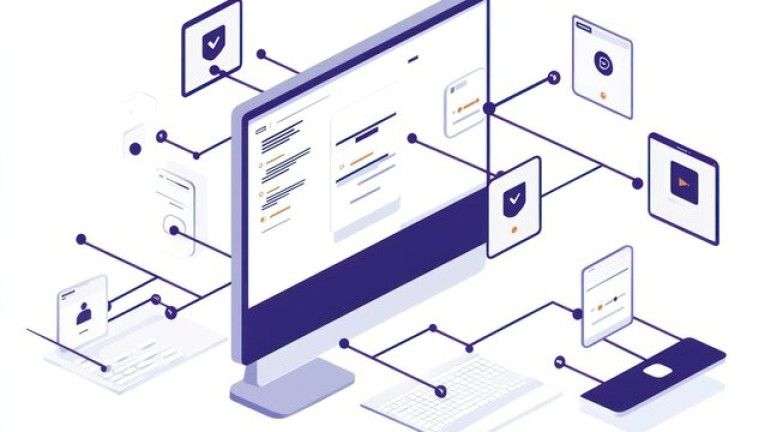Blockchain technology has made significant strides over the last decade, transforming industries and redefining the way businesses think about data security, transactions, and transparency. As the technology evolves, new methodologies emerge to enhance its performance and adaptability. One such methodology is the concept of “Agile Blockchain,” a dynamic and flexible approach to blockchain development that combines the power of agile principles with the underlying structure of blockchain technology.
In this article, I’ll explore how Agile Blockchain works, its benefits, and how it compares to traditional blockchain approaches. I’ll break down its key components and show how this innovative methodology can revolutionize the development process for blockchain applications.
Table of Contents
Understanding Blockchain
Before diving into Agile Blockchain, it’s important to first understand the foundational technology that it aims to improve. Blockchain is essentially a distributed ledger system that allows data to be stored across a network of computers, providing transparency, immutability, and decentralization. Each block in the chain contains a set of transactions, and once a block is added to the blockchain, it cannot be altered or deleted, ensuring a high level of security.
While blockchain is widely recognized for its use in cryptocurrencies like Bitcoin and Ethereum, its potential extends far beyond the financial sector. Blockchain is being explored in fields ranging from healthcare and supply chain management to voting systems and intellectual property rights.
The Challenges with Traditional Blockchain Development
Traditional blockchain development often follows a rigid, waterfall approach, which can be slow and inflexible. The process is typically linear, requiring developers to complete each stage of development before moving on to the next. This method works well for projects with well-defined goals and stable requirements. However, blockchain projects often face rapid technological changes, evolving market demands, and unexpected challenges.
The lack of flexibility in traditional approaches can lead to delays, increased costs, and an inability to quickly adapt to changes. Furthermore, the decentralized nature of blockchain can make collaboration across teams and stakeholders more difficult, especially when there’s no clear owner or centralized authority.
What is Agile Blockchain?
Agile Blockchain is a methodology that applies agile principles to blockchain development. The agile approach, which originated in software development, is focused on flexibility, collaboration, and iterative progress. Instead of following a strict sequence of steps, agile projects prioritize adaptive planning and the ability to respond to change.
In the context of blockchain, Agile Blockchain emphasizes creating functional blockchain applications through continuous, incremental development cycles known as sprints. Each sprint focuses on delivering a small, working piece of the project. This allows teams to release blockchain applications in stages, gather feedback, and adjust as needed.
Key Principles of Agile Blockchain
Agile Blockchain shares many of the principles of traditional agile development, but it adapts these to the unique requirements of blockchain technology. Here are the key principles that guide Agile Blockchain:
- Iterative Development: Instead of waiting until the end of the project to see results, Agile Blockchain breaks down development into smaller, manageable pieces. This allows teams to make progress quickly, delivering a working product at the end of each iteration.
- Collaboration and Transparency: Agile Blockchain encourages collaboration among all stakeholders, including developers, business owners, and end-users. Regular meetings and communication ensure that everyone is on the same page, and feedback is continuously integrated into the development process.
- Flexibility and Adaptability: One of the main benefits of Agile Blockchain is its ability to adapt to change. Blockchain projects often evolve as new technologies and regulatory requirements emerge. Agile Blockchain allows teams to pivot quickly in response to new information or changes in the market.
- Incremental Delivery: Rather than delivering the entire product in one go, Agile Blockchain focuses on delivering small, incremental updates. Each update adds value to the blockchain application, and these updates can be rolled out to users for immediate feedback.
- Continuous Improvement: Agile Blockchain encourages teams to reflect on each sprint and identify areas for improvement. This creates a culture of continuous improvement, ensuring that development processes become more efficient and effective over time.
Benefits of Agile Blockchain
- Faster Time-to-Market: One of the primary benefits of Agile Blockchain is its ability to speed up development. By breaking the project down into smaller sprints, teams can quickly release functional versions of the blockchain application. This is particularly useful for businesses looking to enter the market quickly or adapt to changing market conditions.
- Better Risk Management: Because Agile Blockchain emphasizes incremental delivery, potential risks can be identified and addressed earlier in the development process. This allows teams to manage risks more effectively, reducing the likelihood of major setbacks later in the project.
- Improved Collaboration: Agile Blockchain fosters collaboration across different teams, stakeholders, and departments. Regular meetings, feedback sessions, and continuous communication ensure that everyone is aligned and working toward the same goals.
- Flexibility to Evolving Requirements: Traditional blockchain development can be inflexible when new requirements or changes arise. Agile Blockchain allows for more flexibility, enabling developers to adjust to shifting market conditions, evolving regulatory environments, or emerging technologies.
- Higher Quality Products: With its focus on continuous testing, feedback, and iteration, Agile Blockchain can lead to higher-quality products. By addressing issues early in the development process and refining the product over time, teams can ensure that the final blockchain application is robust and reliable.
Agile Blockchain vs. Traditional Blockchain Development
To better understand the advantages of Agile Blockchain, it’s helpful to compare it to traditional blockchain development approaches. Here’s a simple comparison table:
| Aspect | Agile Blockchain | Traditional Blockchain Development |
|---|---|---|
| Development Approach | Iterative, incremental sprints | Linear, waterfall approach |
| Flexibility | Highly flexible, able to adapt to changes | Rigid, difficult to adapt to changes |
| Time-to-Market | Faster, with continuous releases | Slower, with long periods between releases |
| Collaboration | Regular collaboration and feedback | Less collaboration, often siloed |
| Risk Management | Identifies risks early, addresses them quickly | Risks are often discovered late in the process |
| Feedback Loop | Continuous feedback from stakeholders | Feedback is collected after project completion |
| Quality Assurance | Continuous testing and refinement | Testing typically happens at the end of the project |
How Agile Blockchain Works in Practice
Now, let’s take a look at how Agile Blockchain works in practice. Consider a scenario where a company wants to develop a blockchain-based supply chain management system. The company adopts Agile Blockchain to streamline the development process.
In the first sprint, the team focuses on designing the basic architecture of the blockchain. They develop a simple prototype that allows participants in the supply chain to track products in real-time. This version doesn’t have advanced features like smart contracts or tokenization, but it provides enough functionality to gather initial feedback.
In subsequent sprints, the team adds features based on feedback from stakeholders. For example, they might add smart contract functionality to automate certain transactions or integrate with existing systems. With each sprint, the team tests the system and refines it, ensuring that the final product meets the business’s needs.
At the end of each sprint, the company can roll out a new version of the blockchain system to a small group of users, allowing them to test it in real-world conditions. This incremental approach ensures that the blockchain system evolves in line with user expectations and market demands.
Challenges of Agile Blockchain
While Agile Blockchain offers numerous benefits, it also presents certain challenges:
- Complexity of Coordination: Blockchain projects often involve multiple teams, departments, and stakeholders. Coordinating all these parties can be difficult, especially in a decentralized system. Agile Blockchain requires careful planning and communication to ensure that everyone is aligned.
- Skill Requirements: Agile Blockchain requires developers to be proficient in both blockchain technology and agile methodologies. Finding skilled professionals who can handle both aspects may be challenging for some organizations.
- Managing Expectations: Because Agile Blockchain emphasizes incremental delivery, stakeholders may have high expectations for the speed at which features are developed. Managing these expectations and ensuring that stakeholders understand the iterative nature of the process is crucial.
- Regulatory Compliance: Blockchain projects, especially those in industries like healthcare or finance, must comply with strict regulatory requirements. Agile Blockchain allows teams to adapt to changing regulations, but it can be challenging to navigate these complexities while maintaining flexibility.
The Future of Agile Blockchain
As blockchain technology continues to evolve, Agile Blockchain is likely to play an increasingly important role in its development. The combination of agility and blockchain’s inherent transparency and security makes it an ideal solution for businesses looking to innovate and stay ahead of the curve.
In the coming years, we can expect to see more organizations adopting Agile Blockchain to create more responsive, scalable, and adaptable blockchain applications. By embracing this methodology, businesses can not only improve the development process but also build blockchain solutions that better meet the needs of users and stakeholders.
Conclusion
Agile Blockchain offers a dynamic and flexible approach to blockchain development, providing businesses with the tools to innovate quickly and efficiently. By combining the best of agile principles with blockchain technology’s transparency, security, and decentralization, Agile Blockchain has the potential to transform the way we build and use blockchain applications. Whether you’re developing a new product or improving an existing system, adopting Agile Blockchain can help you navigate the challenges of an ever-changing technological landscape and deliver higher-quality solutions faster





